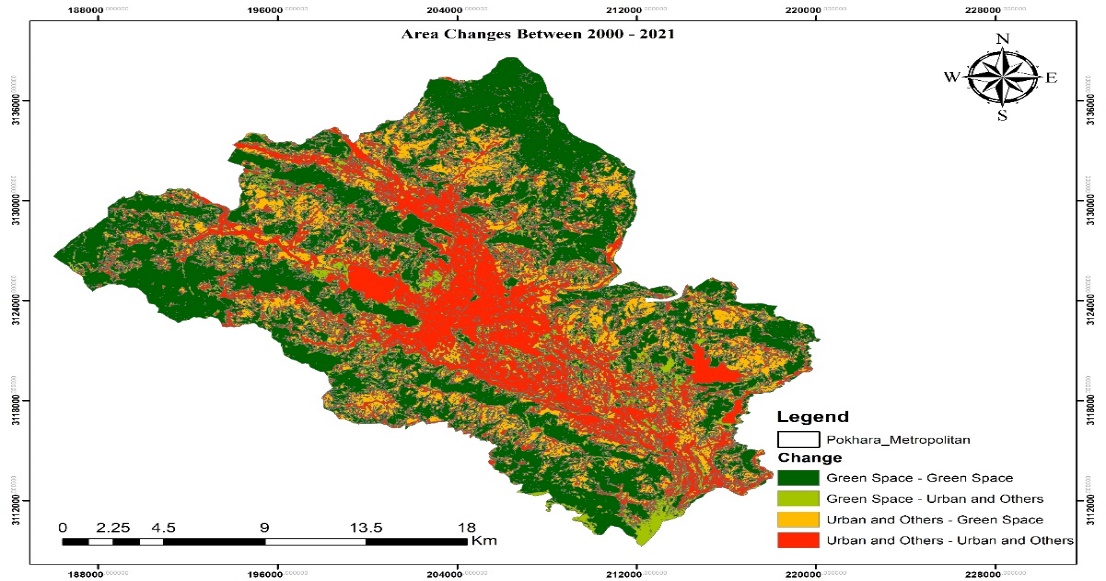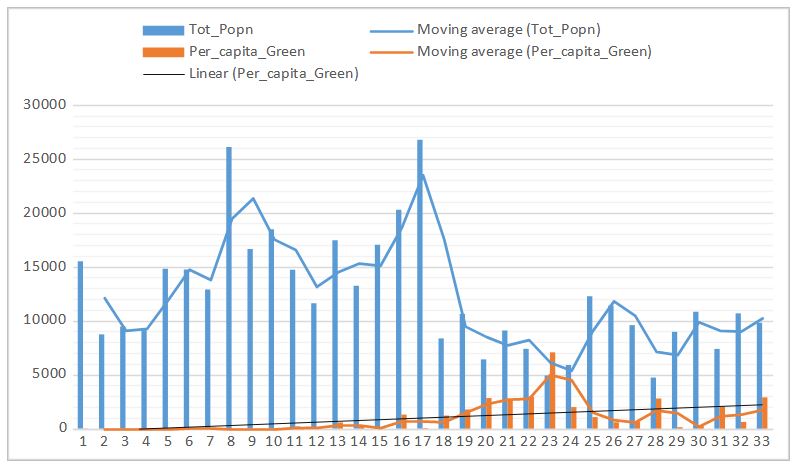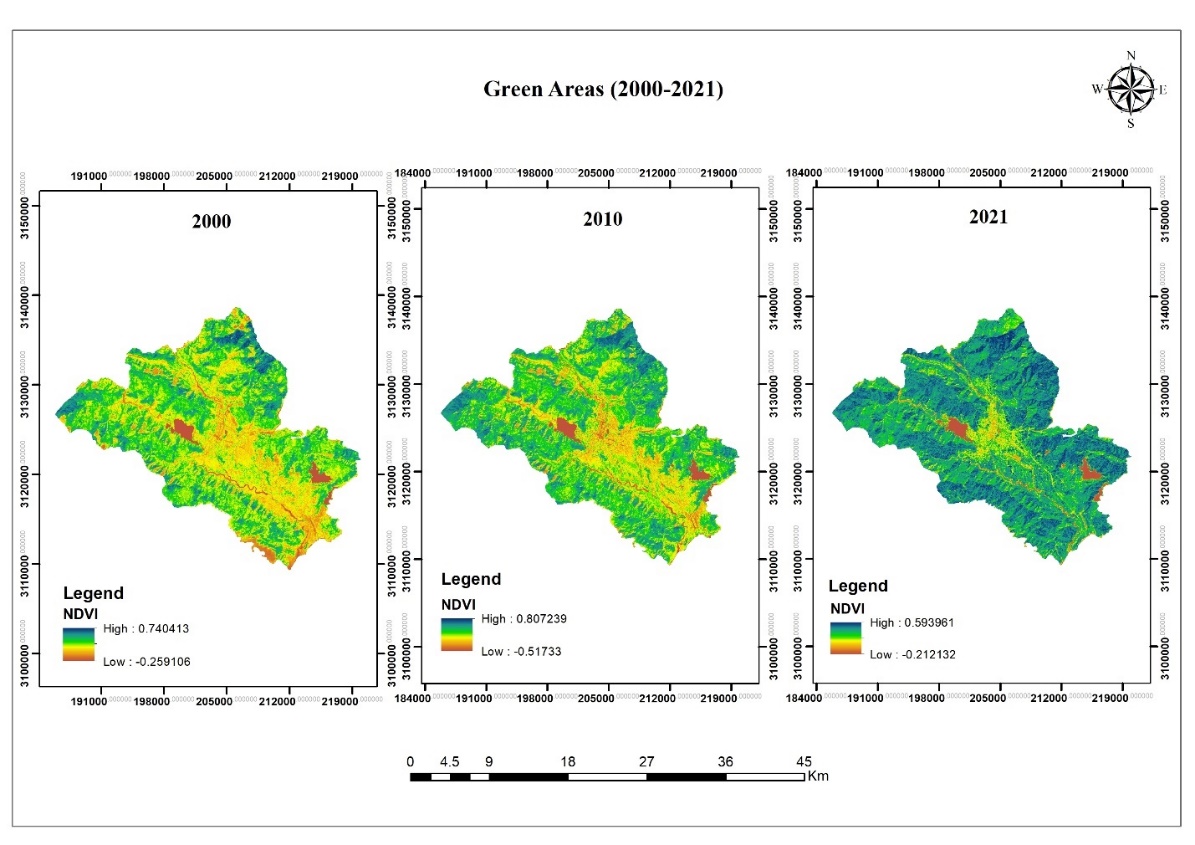Introduction
Pokhara, Nepal, known for its natural beauty and cultural richness, is facing the challenges of urbanization and climate change. As the capital of Gandaki Province and the administrative headquarters, Pokhara has experienced rapid growth in population and urban infrastructure. This blog explores the importance of creating a green, resilient, and inclusive city in the face of a changing climate and discusses the challenges and opportunities that Pokhara encounters on this journey.
Understanding Pokhara's Urban Environment
Pokhara is a metropolitan city in central Nepal, encompassing the former Pokhara municipality, Lekhnath Municipality, and several nearby Village Development Committees (VDCs), making it the largest metropolitan area in Nepal in terms of geographical size. As of 2021, the city has a population of 418,452 inhabitants living in 101,669 households. The total area of Pokhara is 464.24 km2, representing 23.01 percent of the Kaski district. The city experiences a diverse climate, with temperatures ranging from 7°C to 31°C and an annual rainfall of 3800 mm. Despite its large area, the city is facing overpopulation challenges due to its population growth, which was 4, 13,397 as of 2011 According to , the current metro area population of Pokhara in 2023 is 476,000, a 3.93% increase from 2022.
The Importance of Green, Resilient, and Inclusive Cities
Green, resilient, and inclusive cities are essential for sustainable urban development. Green cities prioritize environmental sustainability, resilience cities can withstand and recover from shocks and stresses, and inclusive cities ensure social equity and equal access to opportunities. These concepts are interconnected and can reinforce each other in creating sustainable and livable cities. The GRID (Green, Resilient, and Inclusive Development) approach recognizes the need for economic growth that is environmentally sustainable and socially inclusive.
Transformation of Urban Green Spaces in Pokhara
Our
study on recent published journal article 2000
to 2021 revealed significant changes in the city's green areas due to
urbanization. The analysis used GIS and RS techniques, showing a
decline in healthy green spaces and an increase in moderately healthy
vegetation. The conversion of agricultural land to grassland and the
expansion of urban areas in core city regions contributed to these
changes. However, suburban areas experienced an increase in green
space due to migration and land-use conversion.
Spatiotemporal Evaluation of Green Space (Subedi, & Pokhrel, 2023).
The Relationship between Urban Growth and Spatial Orientation
Urban growth in Pokhara is concentrated along major highways and near rivers and lakes. Migrants from different regions show location preferences based on their origins. The expansion of urbanization along major highways, such as Siddharth, Prithvi, and Baglung, has contributed to the spatial orientation of the city. The study also highlights the negative correlation between population and per capita green space, indicating the need for balanced urban development to ensure access to green areas for all residents.

Correlation between Per Capita Green and Population Density (Subedi, & Pokhrel, 2023).
Promoting Green Spaces for Resilient Development
To create a green and resilient city, Pokhara must prioritize the preservation and expansion of urban green spaces. Green infrastructure, such as parks and green roofs, not only enhance environmental sustainability but also provide resilience benefits by reducing the urban heat island effect and mitigating stormwater runoff. Our study suggests that government agencies should identify, monitor, and safeguard potential sites for urban green spaces in the central city region to promote their growth and enhance overall resilience.

Conclusion
Pokhara, Nepal, is striving to become a green, resilient, and inclusive city amidst the challenges of urbanization and climate change. The city recognizes the importance of sustainable urban development in the face of these pressing issues. In order to achieve this goal, several key factors need to be considered. Firstly, the transformation of urban green spaces is crucial for creating a sustainable and livable city. The expansion of urban infrastructure has led to a decline in green spaces within the central areas of Pokhara. However, there has been an increase in green spaces in the city's outlying and suburban regions, mainly due to the conversion of agricultural land into grasslands. It is important for the government and relevant agencies to identify and safeguard potential sites for urban green spaces, promoting their growth and ensuring their preservation. Green spaces offer numerous ecological benefits, such as improving air quality, reducing the urban heat island effect, and providing recreational areas for residents.
Secondly, the spatial orientation of urban growth plays a significant role in shaping the city's development. The concentration of built-up areas along major highways and within the central region indicates the patterns of urbanization in Pokhara. As people from rural areas migrate to urban centers, their settlement preferences are evident.
Understanding these patterns can help in planning and managing urban growth effectively. By strategically locating infrastructure, amenities, and services along major transportation routes, Pokhara can promote sustainable mobility and reduce commuting distances, thereby minimizing carbon emissions and enhancing the city's resilience. Furthermore, achieving a balanced and inclusive development is essential for creating a sustainable city. Economic growth should be pursued in a way that is environmentally sustainable and socially inclusive. This can be achieved by promoting green infrastructure, such as renewable energy systems and energy-efficient buildings, which not only reduce environmental impact but also create green jobs and stimulate the local economy. In addition, affordable housing, accessible healthcare, and quality education should be prioritized to ensure that all residents have equal access to basic services and opportunities. By addressing the needs of vulnerable and marginalized communities, Pokhara can foster social equity and create a truly inclusive city.
Finally, as one of the most popular tourism destinations, Pokhara should take steps towards becoming a green, resilient, and inclusive city. By focusing on the transformation of urban green spaces, the spatial orientation of urban growth, and the need for balanced development, Pokhara has the potential to become a model city that achieves economic growth while prioritizing social and environmental sustainability. Through collaborative efforts, innovative strategies, and the engagement of stakeholders, Pokhara can pave the way for a sustainable future and inspire other cities to follow suit.